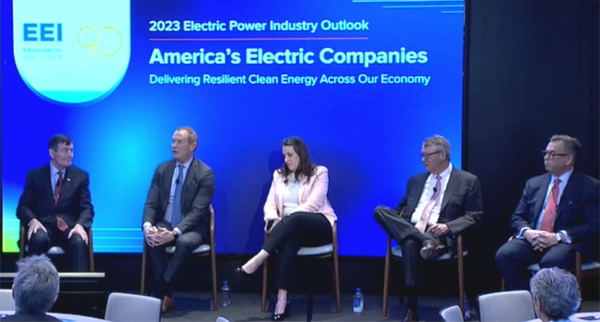Global methane emissions were up last year despite high energy prices, concerns around supply security and economic uncertainty, the International Energy Agency said Monday in its 2023 Global Methane Tracker update.
The agency found that global emissions of methane hit 135 million tons in 2022, which is only slightly below the record set in 2019. The energy sector is responsible for about 40% of methane emissions attributable to human activity, coming in second to agricultural.
“Our new Global Methane Tracker shows that some progress is being made but that emissions are still far too high and not falling fast enough — especially as methane cuts are among the cheapest options to limit near-term global warming. There is just no excuse,” IEA Executive Director Fatih Birol said. “The Nord Stream pipeline explosion last year released a huge amount of methane into the atmosphere. But normal oil and gas operations around the world release the same amount of methane as the Nord Stream explosion every single day.”
The Nord Stream pipeline that brought Russian natural gas to Germany exploded last fall, releasing more than 150,000 tons of methane directly into the atmosphere, making it by far the largest methane emitting event of 2022.
Global oil production led to release of 45.6 million metric tons (MMT) of methane, followed by coal production (41.8 MMT), natural gas production (36.7 MMT), and bioenergy (9.2 MMT), IEA said.
Methane is responsible for about 30% of the rise in global temperatures since the Industrial Revolution, and while it remains in the atmosphere for only 12 years instead of centuries, it absorbs far more energy from sunlight than carbon dioxide does while it is there. The concentration of methane in the atmosphere is now two-and-a-half times greater than pre-industrial levels.
IEA noted that it is difficult to track methane emissions because some of the largest emitting events are accidents and that unpredictable process failures might contribute to a large level of emissions from oil and gas operations, which are often not included in bottom-up inventories.
Satellite technology to help detect methane releases is being improved, but it is not perfect because it does not work in mountain ranges, snowy or ice-covered regions, and at high latitudes. Only recently have satellites been able to detect methane leaks associated with offshore drilling, and that technology has not become part of routine monitoring efforts.
‘Untamed Release’
Methane emissions from oil and gas production alone could be cut by 75% with existing technologies, which IEA said highlights a lack of industry action on an issue that is often very cheap to address. That investment would only cost $100 billion, or less than 3% of the income from oil and gas companies in 2022.
“The untamed release of methane in fossil fuel production is a problem that sometimes goes under the radar in public debate,” Birol said. “Unfortunately, it’s not a new issue, and emissions remain stubbornly high. Many companies saw hefty profits last year following a turbulent period for international oil and gas markets amid the global energy crisis. Fossil fuel producers need to step up, and policy makers need to step in — and both must do so quickly.”
The technologies and measures to prevent methane emissions from oil and gas production are well-known and have been deployed around the world. They include leak-detection and repair campaigns, installing emissions control devices, and replacing components that emit methane in their normal operations.
The most impactful policy countries could adopt is the elimination of all non-emergency flaring and venting of methane. About 260 billion cubic meters of methane is lost to the atmosphere every year from oil and gas operations, and 75% of that could be retained and brought to market using existing technologies. That amount of captured methane would be more than the European Union’s total annual gas imports from Russia before the latter invaded Ukraine, IEA said.
The American Petroleum Institute said that the oil and gas industry was already working to bring down methane emissions.
“Our industry is at the forefront of data collection and advancing and utilizing cutting-edge technologies, including remote monitoring with satellites and laser-based aerial surveys, to detect and reduce methane emissions,” Frank Macchiarola, API senior vice president of policy, economics and regulatory affairs, said in a statement. “Thanks to innovation and concerted industry action, average methane emissions intensity declined by nearly 66% across all seven major producing regions from 2011 to 2021.”


